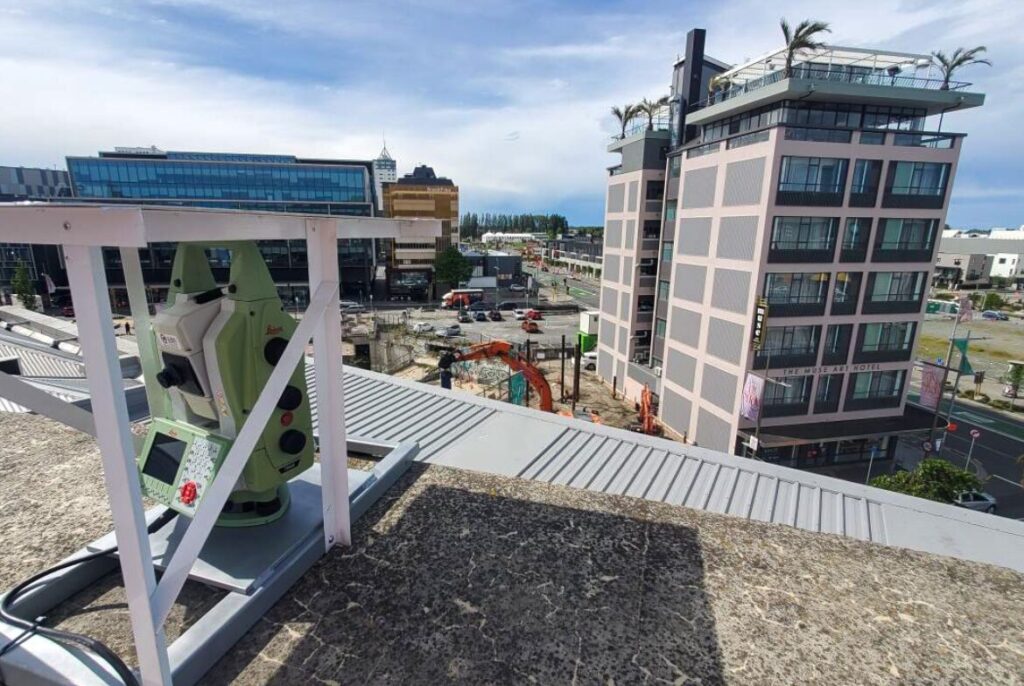Moore Construction was engaged to deliver foundation and ground engineering works involving screw piling, sheet piling, and dewatering for a new building adjacent to the Muse Hotel in Christchurch. The works began with the submission of a detailed Work Pack, including the ITP and SSSP, followed by site establishment and formation of a crane/piling platform. A total of 27m deep, 273mm diameter screw piles were installed as part of the foundation system.
In collaboration with our geotechnical engineering design partner, Moore Construction proposed an optimised, non-conforming tender to replace the original galvanised pile design with an uncoated steel solution based on calculated corrosion loss. This approach, compliant with SNZ TS 3404:2018, allowed for a corrosion rate of 0.03mm/year over a 50-year design life, with loss accounted for on both faces of the helix and only the external shaft face, as the pile interior is protected by concrete infill. This alternative design maintained structural performance under both static and seismic loading and delivered a $550,000 cost saving by eliminating hot-dip galvanising. A PS1 for the alternative design was offered, pending acceptance by Wiley’s engineering team.
To manage risk to adjacent structures during dewatering and piling, Moore Construction established an automated structural monitoring system using Leica total stations, configured in collaboration with Global Survey NZ. Installed on a neighbouring building, this system collected data from fixed monitoring prisms every two minutes via Leica GeoMoS, providing real-time alerts if movement exceeded tolerances. This solution offered a significant cost and risk reduction over traditional manual monitoring methods.
Sheet piling was undertaken using SP3a sheets driven with a vibratory hammer. The SP3a profile was selected for its availability, shallow pan depth (suitable for constrained conditions along GL A, B, and Z), appropriate section properties, and 9m length compatibility. An initial cantilevered design without flying props was favoured for ease of construction and reduced fabrication cost. Drivability assessments were completed using GRLWEAP 14 to ensure appropriate installation equipment selection. Unforeseen site conditions led to a revision of the sheet piling methodology and temporary works design, incurring additional cost, which had been anticipated in the original tender negotiation.
Prior to sheet installation, dewatering was required to prevent hydrostatic uplift and protect adjacent structures. Moore Construction implemented a staged drawdown strategy using its internal digital quality system (Teammate) to meet strict water quality standards. Following successful water level reduction, excavation proceeded to the required formation depth of 3m below ground level.


